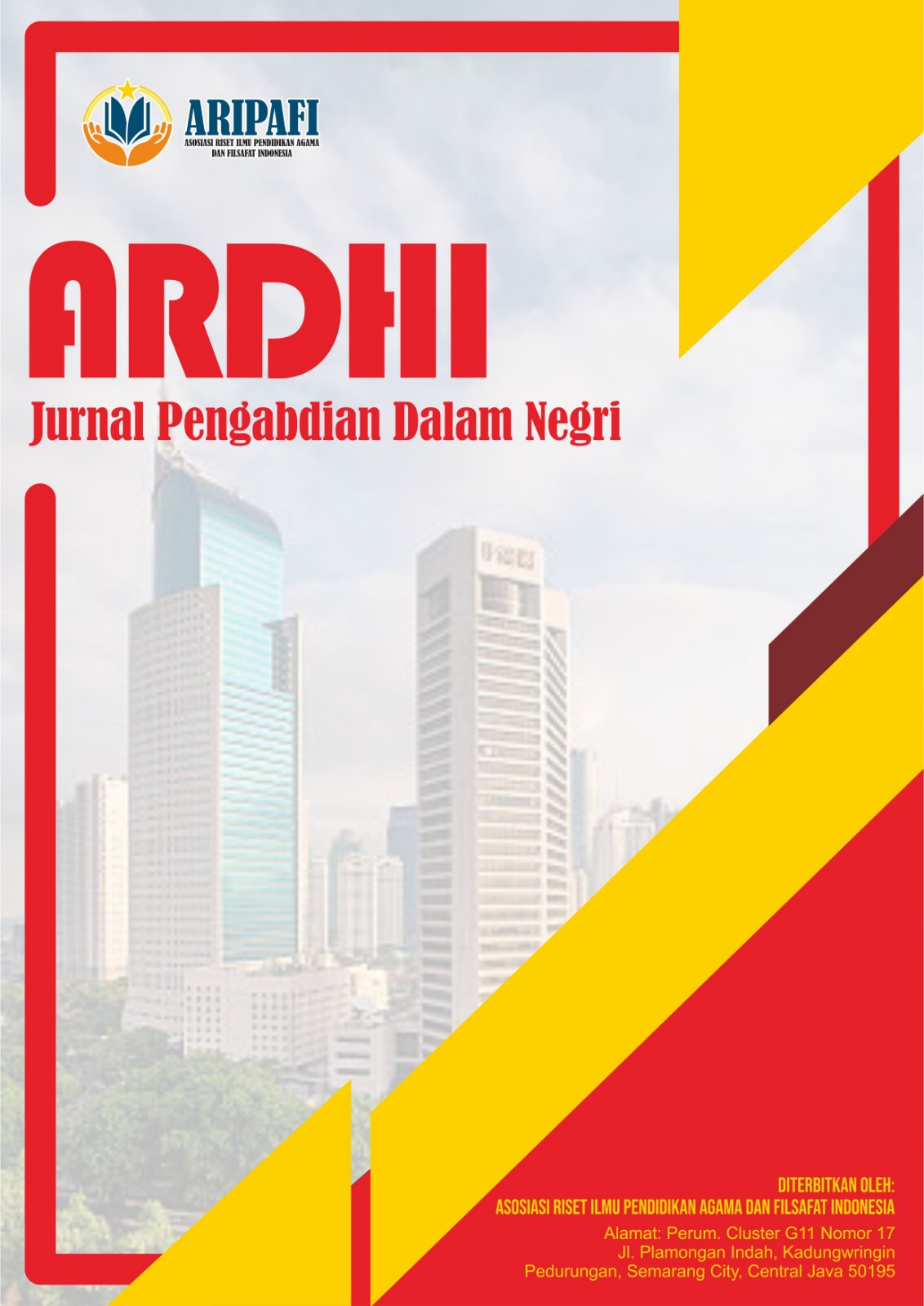Penguatan Komunikasi Efektif : Pengabdian Masyarakat dalam Pengembangan Keterampilan Public Speaking Guru dan Instruktur di Pondok Pesantren
DOI:
https://doi.org/10.61132/ardhi.v2i3.455Keywords:
public speaking, effective communication, teacher training, community serviceAbstract
Effective communication is a crucial skill for educators, particularly in religious institutions like Pondok Pesantren. This community service project aimed to enhance the public speaking abilities of teachers and instructors at a Pondok Pesantren. Through interactive workshops and practical exercises, participants were trained in various aspects of public speaking, including voice modulation, body language, content organization, and audience engagement. The project emphasized the importance of clear and confident communication in imparting knowledge and religious teachings. Pre- and post-training evaluations showed significant improvements in the participants' public speaking skills, confidence levels, and teaching effectiveness. The project's success highlights the value of community service initiatives in promoting professional development and fostering a conducive learning environment within religious educational institutions
Downloads
References
Ayres, J., & Cronin, M. W. (2010). Effective public speaking: A guide to theory, research, and practice. Dubuque, IA: Kendall Hunt Publishing.
Bankowski, E. (2010). Developing skills for effective public speaking. The Journal of Effective Teaching, 10(3), 51-63.
Dhofier, Z. (1994). Tradisi Pesantren: Studi Pandangan Hidup Kyai dan Visinya Mengenai Masa Depan Indonesia. Jakarta: LP3ES.
Frymier, A. B., & Houser, M. L. (2000). The teacher-student relationship as an interpersonal relationship. Communication Education, 49(3), 207-219.
Furmark, T. (2002). Social phobia: Overview of community surveys. Acta Psychiatrica Scandinavica, 105(2), 84-93.
Lucas, S. E. (2015). The art of public speaking (12th ed.). New York: McGraw-Hill Education.
Mottet, T. P., Frymier, A. B., & Beebe, S. A. (2006). Theorizing about instructional communication. In T. P. Mottet, V. P. Richmond, & J. C. McCroskey (Eds.), Handbook of instructional communication: Rhetorical and relational perspectives (pp. 255-282). Boston: Allyn & Bacon.
Nussbaum, J. F. (1992). Effective teacher behaviors. Communication Education, 41(2), 167-180.
Richmond, V. P. (1990). Communication in the classroom: Power and motivation. Communication Education, 39(3), 181-195.
Teven, J. J., & McCroskey, J. C. (1997). The relationship of perceived teacher caring with student learning and teacher evaluation. Communication Education, 46(1), 1-9.
Verderber, R. F., Verderber, K. S., & Sellnow, D. D. (2016). The challenge of effective public speaking (16th ed.). Boston: Cengage Learning.
Wrench, J. S., Richmond, V. P., & Gorham, J. (2009). Communication, affect, and learning in the classroom (3rd ed.). San Francisco: Creative Commons.
Downloads
Published
How to Cite
Issue
Section
License
Copyright (c) 2024 ARDHI : Jurnal Pengabdian Dalam Negri

This work is licensed under a Creative Commons Attribution-ShareAlike 4.0 International License.





